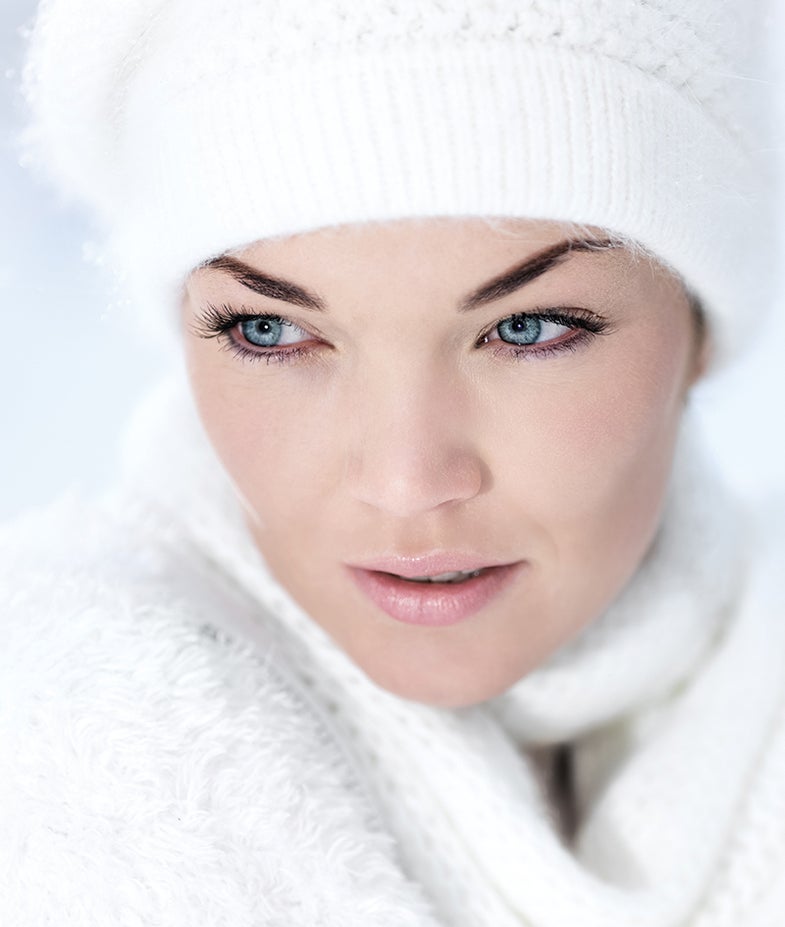How To: Shoot Outdoor Portrait Photos in the Snow
Photographer Alex Heinrichs uses the elements to his advantage to produce killer high-key portraits.

In Aschaffenburg, Germany, a Bavarian town 30 minutes outside of Frankfurt, snow doesn’t fall all that often. So when he saw the white stuff coming down a few years ago, pro photographer Alex Heinrichs grabbed his camera, location lights, and his favorite model, and dashed outdoors to shoot.
He had asked her to wear only white, since he planned to take advantage of all the snow to produce a few killer high-key portraits. “If you work outdoors in bad weather, you have to work fast,” warns the photographer, who specializes in beauty, fashion, and corporate work. “You want your model to look good and your gear to stay dry. There’s no time for test shooting.”
Like almost all forms of lighting, high-key can be boiled down to lighting ratios. These sets of numbers describe the relative difference between main and fill lights. A 1:2 ratio suggests a low-contrast scene, while a 1:5 ratio describes a very high-contrast image. For high-key portraits, you want all dominant tones to be white, with highlights and shape-defining shadows (as in the sweater and cheeks here) to be close to the same density—a ratio of about 1:2. A common way to assure these ratios is by taking incident light meter readings of main and fill lights, and setting their relative outputs so the fill is just a stop below the main.
For anyone wanting to try high-key portraiture, Heinrich offers these additional tips:
• Nail the exposure. “High-key doesn’t mean overexposed,” says Heinrichs. “The exposure has to be correct for the model’s skin. Light metering is the way to go.” If you overexpose the shot to get the high-key look, blacks (as in the eyebrows and eyelashes here)will become a washed-out gray. Part of this picture’s success is due to those snappy blacks.
• Sync foreground and background exposures. Set the main light on your subject to be just slightly brighter than the lighting on your white background—in this case, the snow. On a gray, overcast day, this often means a low flash output. If you don’t get it right, the background could easily go dark gray, compromising the high-key look.
_

For his high-key portrait made in falling snow, Alex Heinrichs asked the model to wear all white and made sure the background behind her was white as well. To prevent his gear from getting wet, he shielded his two Multiblitz Profilux Plus 800 monolights (A) and the Multiblitz Propac 1 battery pack (B) that powered them in plastic. And he worked as quickly as possible, since his rig—a Hasselblad H3DII-031 and Hasselblad 150mm f/3.2 HC lens (C), with a Multiblitz RS2 wireless flash trigger (D)—were unprotected for the few minutes that the shoot took. The photographer’s main light was modified with the Multiblitz 3-in-1 softlight Beauty Dish Reflector (E) and the backlight with a standard 7-inch Multiblitz white reflector (F). He chose the beauty dish for its contrastier quality of light and its better suitablity for use in inclement weather compared with a softbox. The term “high-key,” by the way, comes from cinema, where the main light is usually referred to as a key light._
For more of Heinrichs’ beauty and fashion photography, go to www.facebook.com/ah.photo.ah.